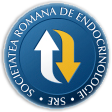
- Login
- Register
- Home/Current Issue
- About the journal
- Editorial board
- Online submission
- Instructions for authors
- Subscriptions
- Foundation Acta Endocrinologica
- Archive
- Contact
 Romanian Academy
Romanian Academy
 The Publishing House of the Romanian Academy
The Publishing House of the Romanian Academy

ACTA ENDOCRINOLOGICA (BUC)
The International Journal of Romanian Society of Endocrinology / Registered in 1938in Web of Science Master Journal List
Acta Endocrinologica(Bucharest) is live in PubMed Central
Journal Impact Factor - click here.

-
General Endocrinology
Ekinci F, Soyaltin UE, Kutbay YB, Yasar HY, Demirci Yildirim T, Akar H
JAK2 V617F Mutation Scanning in Patients with Adrenal IncidentalomaActa Endo (Buc) 2017 13(2): 150-153 doi: 10.4183/aeb.2017.150
AbstractObjective. Adrenal incidentaloma are lesions which are stated incidentally by imaging methods when there is no suspicion of any disease in adrenal gland. Inappropriate Jak2 signaling causes some solid and hematological malignancies. But the Jak2 mutation has not been previously evaluated with regard to adrenal tumors. In this study, we aimed to positivity of the Jak2 mutation in patients with non functioning adrenal incidentaloma (NFAI). Methods. 45 (38 female–7 male) patients, who were followed due to NFAI at Tepecik Training and Research Hospital, Department of Endocrinology and Internal Medicine between February 2014 and March 2015, and 45 (31 female–14 male) healthy controls were included in the study. Results. The average age was 54.02±11.7 years and 38 patients were female, 7 were men. All patients underwent the following analyses for excluding a functioning adrenal mass, overnight dexamethasone suppression test, 24 hour urinary metanephrine and normetanephrine, plasma aldosterone/ renin activity ratio. Jak2 mutation of the patients who were diagnosed as NFAI was all negative. Conclusion. We could not identify the JAK2 gene mutation positivity in any sample. Since other possible mechanisms may throw fresh light on the etiology of adrenal incidentaloma, further clinical studies are needed on this subject. -
General Endocrinology
Can M, Kocabas M, Karakose M, Alsancak Y, Yerlikaya FH, Caliskan Burgucu H, Cordan I, Kadiyoran C, Kulaksizoglu M, Karakurt F
New Biomarkers to Predict Cardiovascular Risk in Patients with Adrenal Incidentaloma; Irisin and Nesfatin-1Acta Endo (Buc) 2022 18(2): 150-155 doi: 10.4183/aeb.2022.150
AbstractObjective. In our study, we aimed to investigate the levels of irisin, nesfatin-1 and the relationship between levels of these relatively new molecules with cardiometabolic risk markers; carotid intima-media thickness (CIMT), epicardial adipose tissue (EAT) thickness in patients with nonfunctional adrenal incidentaloma (NFAI). Materials and Methods. Patients with NFAI (n=59) and age, sex and body mass index-matched healthy control subjects (n=59) were enrolled in this study. Serum glucose, insulin, C-reactive protein (CRP), lipid, irisin and nesfatin-1 levels and echocardiographic CIMT and EAT thickness measurements were performed in patients and controls. Results. The irisin level was 17.58 ± 4.38 pg/mL in the NFAI group, significantly higher (p<0.001) than 14.03 ± 4.03 pg/mL in the control group. Nesfatin-1 level was significantly lower in the NFAI group 194.98 ± 119.15 pg/ mL ((p < 0.001)) versus 303.48 ± 200.78 pg/mL in the control group. A positive correlation was found between irisin and nesfatin-1 levels and CIMT and EAT thickness in the NFAI group. Conclusions. In our study, we found that irisin level was higher and nesfatin-1 level was lower in patients with NFAI, and both irisin and nesfatin-1 levels were associated with CIMT and EAT thickness in NFAI patients. -
General Endocrinology
Sinha BR, Chakraborty S
Pineal-thyroid karyomarphology and function in resonse to diversely altered serum T4 levels in rat (rattus rattus)Acta Endo (Buc) 2010 6(2): 151-163 doi: 10.4183/aeb.2010.151
AbstractBackground. The pineal cytomorphological responsiveness to altered serum T4 levels awaits any comprehensive investigations in mammals .\r\nAim. The aim of the present investigation was to use rats with diversely altered serum T4 level, to study the pineal karyomorphology and functions.\r\nMaterials and Methods. Five groups each with 11 rats were used as controls and T4 (50μg/100g b.w.) for seven consecutive days, thyroidectomized and kept for thirty days and additionally such TX rats, treated with T4 (50μg/100g b.w.) for seven days, were used for pineal karyometry and serum T4 analysis.\r\nResults. They indicated that thyroxine administration evoked hyperactive changes in pineal gland cytomorphology along with enhanced serum T4, as evidenced from increased\r\npinealocyte nuclear diameter (μm) (C 4.71+0.03,T4 5.14+0.04,p<0.001) and decreased nuclear density (C 179.44+4.78,T4 126+4.36,p<0.001) and enhanced serum T4 level\r\n(μg/dL), (C 3.60+0.13,T4 13.40+1.75,p<0.001). Contrarily, thyroidectomized (TX) rats with undetectable T4 levels (<0.05 μg/dL) showed pineal inhibition, as seen from significantly decreased pinealocyte nuclear diameter (μm) (C 4.71+0.03,Tx 4.01+0.04,p<0.001) values, and an increased nuclear density per microscopic field (C179.44+4.78, Tx 208.8+4.47, p<0.005). However, thyroidectomized animals, supplemented with thyroxine (Tx + T4), induced pineal activation as seen from increased pinealocyte nuclear diameter, μm (C 4.71+0.03, Tx + T4 5.26+0.05, p<0.001) associated with increased serum T4 level μg/DL (C 3.60+0.13, Tx+T4 10.92+0.13m p<0.001).\r\nConclusion. The present study argues for a direct pineal-thyroid relationship as interpreted from cytomorphological level and hormone profiles in male albino rats. -
General Endocrinology
Sara? F, Oztekin K, Yildiz S, Saygili F, Tuzun M, Yilma C
Possible association between hormonal status and adipose tissue culture characteristics in obese and non-obese sujectsActa Endo (Buc) 2008 4(2): 151-160 doi: 10.4183/aeb.2008.151
AbstractThe aim of this study is to investigate the possible association between hormonal status and adipose tissue characteristics in obese and non-obese subjects. Fourteen obese and 15 nonobese premenopausal female patients were enrolled in the study. Stromal vascular cells were isolated and cultured using modified procedures described by Entenmann and Hauner. In the non-obese group, omental SVCs seeded at a density of 4.12?1.1x103/cm2 in 25-cm2 in culture flasks for measuring cell proliferation and subcutaneus SVCs seeded at a density of 2.05?0.76x103/cm2 in 25-cm2 at culture flasks. In the obese group, omental SVCs seeded at a density of 6.11?1.98x103/cm2 in 25-cm2 at culture flasks for measuring cell proliferation and subcutaneous SVCs seeded at a density of 2.94?0.75x103/cm2 in 25-cm2 in culture flasks. Mean GPDH activity levels were significantly higher in SVCs from the omentum in obese compared to those from the omentum in nonobese (651.9?65.7 vs 405.1?60.1 mU/mg protein). However, GPDH activities were similar in SVCs from the subcutaneous SVCs in obese subjects, compared to those from the subcutaneous SVCs in non-obese subjects (303.5?63.2 vs 367.4?73.7 mU/mg protein). In obese group, omental SVCs number was positively correlated with plasma estradiol (E2) (r=0.604, p=0.017), and fasting insulin levels (r=0.843, p=0.01). It was negatively correlated with plasma progesterone (r=-0.793, p=0.006), prolactin (r=-0.655, p=0.008) and free T3 (FT3) levels(r=-0.630, p=0.01). These findings suggest that there are differences in adipose tissue proliferation capacity and metabolic activity between obese and non-obese subjects. In obese group, the number of omental stromal vascular cells was positively correlated with plasma estradiol and insulin levels. -
General Endocrinology
Purice M, Gheorghiu ML, Caragheorgheopol A, Tanasescu R
Comparison between immunometric methods for the determination of FSH, LH, TSH and PRL hormones in CSFActa Endo (Buc) 2006 2(2): 151-161 doi: 10.4183/aeb.2006.151
AbstractIntroduction: The necessity to determine the levels of pituitary hormones in the cerebrospinal fluid is motivated both by difficulties in the diagnosis of different neuroendocrine disorders, as well as by research purposes such as understanding the transport mechanisms of hormones through the blood brain barrier.\r\nObjective: The aim of this study was to compare the results obtained with different immunometric methods for some pituitary hormones in the serum and CSF in patients with neuroendocrine tumors.\r\nMaterials and methods: The levels of LH, FSH, PRL and TSH were determined simultaneously in the serum and CSF with 3 different immunometric methods using commercial kits: IRMA, FIA and Chemiluminescence for 36 patients. The validation of IRMA method on CSF samples was performed using the dilution test.\r\nResults: The dilution test - as one of validation criteria of an immunoassay - proved that the results obtained in the CSF using the commercially available kits were correct. This enables the use of this sensitive method to accurately demonstrate abnormal levels of pituitary hormones beyond the blood-brain barrier. The correlation between IRMA and FIA: Hormonal concentrations values obtained by IRMA correlate well with those measured by FIA for serum with no significant differences of the mean concentration value for FSH (r=0.93, p: NS) and LH (r=0.99, p: NS), but with a significant difference for PRL (r=0.88, p=0.002). In CSF, mean concentrations values correlate well and we found no differences for TSH (r =0.97, p: NS) and LH (r = 0.94, p: NS), but significant differences for PRL (r= 0.98, p=0.001) and FSH (r=0.98, p=0.001). Statistically significant differences were also found for the CSF/serum ratio for PRL (p=0.08), FSH (p=0.001) and LH (p=0.001). The ratios CSF/serum are significantly higher with IRMA method than with FIA for all the hormones. Except for one patient for all the others we found the ratio CSF/serum less than 1 showing that the pathologic significance of this parameter is not modified due to the type of immunometric assay. A statistically significant difference (p<0.001) was found for mean FSH concentration in CSF with FIA and Chemiluminescent assays .\r\nConclusions: Any immunometric method currently used for the determination of hormones in the serum or plasma has to be validated accordingly in order to be used on CSF. For obtaining results that can be interpreted and compared it is preferred that the same immunometric method is used on both serum and CSF, inside one group of patients. The presence of a control group for the results determined with that method is strongly recommended. -
General Endocrinology
Stefanescu AM, Schipor S, Paun D, Dumitrache C, Badiu C
Plasma versus Salivary Chromogranin A as Selective Markers in Pheochromocytoma DiagnosisActa Endo (Buc) 2011 7(2): 153-161 doi: 10.4183/aeb.2011.153
AbstractBackground: Simultaneously determined plasma chromogranin A (CgA) and free metanephrines can substantially enrich laboratory diagnosis of pheochromocytoma (PHEO). CgA-like\r\nimmunoreactivity was discovered in saliva. Salivary CgA (CgA-LIS) could precise PHEO diagnosis in a non-aggressive\r\nmanner for the patient using saliva instead of plasma samples.\r\nSubjects and methods: A group of 10 PHEO patients: 7 women (22 to 72 years ) and 3 men (42 to 59 years) and a control\r\ngroup of 10 subjects were included in this retrospective study. Plasma free metanephrines and CgA were assayed by\r\nElisa kits. Salivary CgA was assayed by an EIA kit. Both analytical and diagnosis performance of the CgA-LIS vs. CgA were compared using Passing& Bablok regression and Receiver Operating Curves (ROC analysis).\r\nResults: In tumor group, mean values for all 4 assayed parameters were significantly increased in comparison with\r\nthe same parameters in normal group as expected: free plasma normetanephrines (NMNp) was: 2773 ? 704.57pg/mL versus 48.51 ? 9.87 pg/mL in controls; free plasma metanephrines (MNp) was: 864.4 ? 330.75 pg/mL versus 19.18 ? 3.69 pg/mL in normals; CgA was: 695.10?235.22 ng/mL versus 74.4?5.37 ng/mL in controls; CgALIS was: 17.62?6.79 pmol/L versus 0.94 ?\r\n0.20 pmol/L in normals. Passing & Bablok regression equation for CgA-LIS versus CgA was: Y=0.0181 + 0.0146X. Cusum test\r\nfor linearity revealed no significant deviation from linearity (P>0.10). A significant correlation between NMNp and CgA-LIS was established in all 20 subjects: r=0.82, P<0.0001. Pairwise comparison of ROC curves for both markers showed no significant difference between areas. Salivary CgA could be successfully used instead of plasma CgA in biochemical diagnosis of pheochromocytoma.\r\nConclusions: We can conclude that salivary CgA could be used as a nonstressfull marker for diagnosis purpose in pheochromocytoma. -
Notes & Comments
Ioacara S, Ionescu-Tirgoviste C, Guja C
Life Expectancy in Adult Diabetes Patients Treated with Insulin from DiagnosisActa Endo (Buc) 2012 8(1): 153-162 doi: 10.4183/aeb.2012.153
AbstractAims. To investigate the historical changes in survival with diabetes in patients treated with insulin from diagnosis.\r\nMethods. We analyzed 2811 deaths, 51.5% males, registered at ?I. Pavel? Bucharest Diabetes Centre, aged 40-64 years and deceased between 1943 and 2009. We split the analysis in three time periods according to year of death: 1943-1965,\r\n1966-1988 and 1989-2009.\r\nResults. The mean age at diabetes onset was 51.4?6.8 years, with mean disease duration at death of 17.7?11.6 years\r\nand mean age at death of 69.1?11.2 years. The mean survival after diabetes onset was 13.9?9.8 years in 1943-1965, and rose to 17.3?9.6 years (p<0.001) in 1989-2009. There was a significant increase for coronary heart diseases and cancer and a significant decrease for infections and endstage\r\nrenal disease as causes of death.\r\nConclusions. We found no significant changes in age at onset, which combined with an increase in survival with diabetes lead to a significant increase in age at death.\r\nMajor historical events have a strong impact over survival after the onset of diabetes. -
General Endocrinology
Abdi Z, Mohsenzadeh S, Jafari Anarkooli I, Ahmadi A, Ghorbanlou M, Arianmanesh M
The Effect of Hsp60 on Fertilization and Pre-Implantation Embryo Development in Mice: an in Vitro StudyActa Endo (Buc) 2019 15(2): 153-157 doi: 10.4183/aeb.2019.153
AbstractContext. Heat Shock Protein 60 (HSP60) is a chaperone protein which is involved in proteins transfer and re-folding of proteins. Objective. Importance of HSP60 in sperm capacitation and facility of sperm-oocyte membrane binding was confirmed, therefore in this study the effect of HSP60 on the rate of in vitro fertilization and the cleavage rate in mouse embryo was investigated. Design. Ten male mice and twenty five female mice were involved to collect sperms and oocytes required for this study. Subjects and Methods. Sperms were collected from the epididymis of male mouse and oocytes were collected from the oviduct of female mouse following ovarian hyperstimulation. Then, capacitated sperms and oocytes were placed together in fertilization medium in four groups in the presence of different concentrations of HSP60 (10, 50 and 100 ng/mL) and in the absence of HSP60. After calculation of the fertilization rate, zygotes were transformed into the other medium for development and the cleavage rate was monitored to blastocyst stage. Results. There was not a significant difference in the rate of fertilization between 10 ng/mL HSP60 group and the control group. The rate of fertilization and two-cell embryo development decreased significantly (P≤0.05) in 100 ng/mL HSP60 compared to other experimental and control groups. Further, the rate of two-cell embryo development increased significantly (P≤0.05) in 10 ng/mL HSP60 compared to other experimental and control groups. Conclusions. The present study demonstrated that HSP60 in low dose had a positive effect on two-cell embryo development, however it did not have any significant effect on the fertilization rate. Conversely, HSP60 had adverse effects on the fertilization and cleavage rates at higher doses. -
General Endocrinology
Todorovic J, Dugalic S, Jovandaric M, Stojiljkovic M, Pantic I, Macura M, Perkovic S, Milincic M, Sengul D, Sengul I, Gojnic M
The Importance of Early Detecting of Thyroid Dysfunction During Pregnancy and Association with Gestational Diabetes MellitusActa Endo (Buc) 2024 20(2): 153-161 doi: 10.4183/aeb.2024.153
AbstractObjective. Thyroid dysfunction represents common disorder occurring very frequently among women of reproductive age, including pregnancy. The aim of this literature review was to determine in which way thyroid function during pregnancy is associated with GDM. Design. We conducted review of the literature following the basic principles of literature search. Methods. Two researcher independently searched PubMed in the period of last five years (2018-2023) to identify eligible studies regarding thyroid function and GDM. Results. From 51 papers initially found after the inserting key words in PubMed search field 30 were excluded after the title and abstract review. After reading full text of 21 articles, 15 were included in the review. Conclusions. Our review of literature showed not only that two most common disorders during pregnancy were GDM and thyroid dysfunction, but also indicated that they were in positive correlation. -
General Endocrinology
Capraru OM, Decaussin-Petrucci M, Joly MO, Borda A, Fanfaret IS, Borson-Chazot F, Selmi-Ruby S
Expression of Menin in the Human Thyroid GlandActa Endo (Buc) 2017 13(2): 154-160 doi: 10.4183/aeb.2017.154
AbstractIntroduction. The expression of menin in the thyroid gland has long been debated. Animal models with targeted inactivation of menin in the thyroid gland have shown that its inactivation might play a role in the progression to a more aggressive type of cancer. Human studies are conflicting, some have identified mutations in the MEN1 gene in a subtype of oncocytic thyroid carcinomas, while others have not identified a higher prevalence of thyroid cancer in MEN1 patients. Objective. To analyze the immunohistochemical expression of menin in different types of thyroid carcinomas. Materials and methods. 48 thyroid tumours (12 papillary thyroid carcinomas (PTC), 6 anaplastic thyroid carcinomas (ATC), 12 poorly differentiated thyroid carcinomas (PDTC), 5 medullary thyroid carcinomas (MTC), 5 oncocytic follicular carcinomas (OC), 3 oncocytic adenomas (OA) and 5 goiters (G)) were tested for nuclear expression of menin using an anti-menin antibody. The expression was considered positive, negative or decreased. Results. The expression of menin was positive, identical to normal tissue, in 39 cases (81.25%). The expression was decreased (n=8) or absent (n=1) in 9 tumours (18.75% - 2 PTC, 5 PDTC, 2 OC) accounting for 42% (5/12) of the PDTC and 40% (2/5) of the OC. Conclusions. Our results show that the expression of menin is generally preserved in human thyroid carcinomas, but it can be decreased or absent in certain types of thyroid cancer. Further molecular studies are needed to evaluate to potential of menin protein in tumorigenesis.